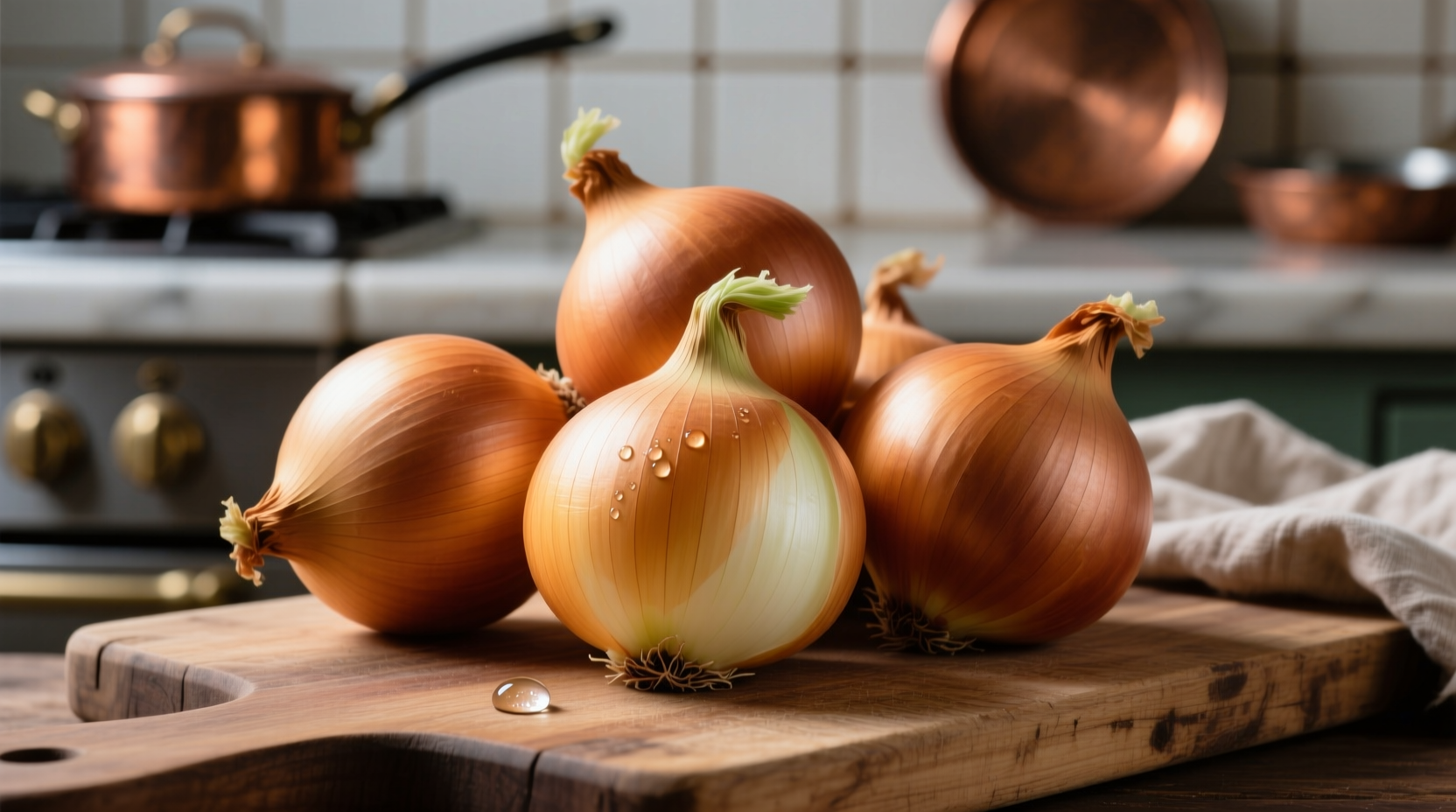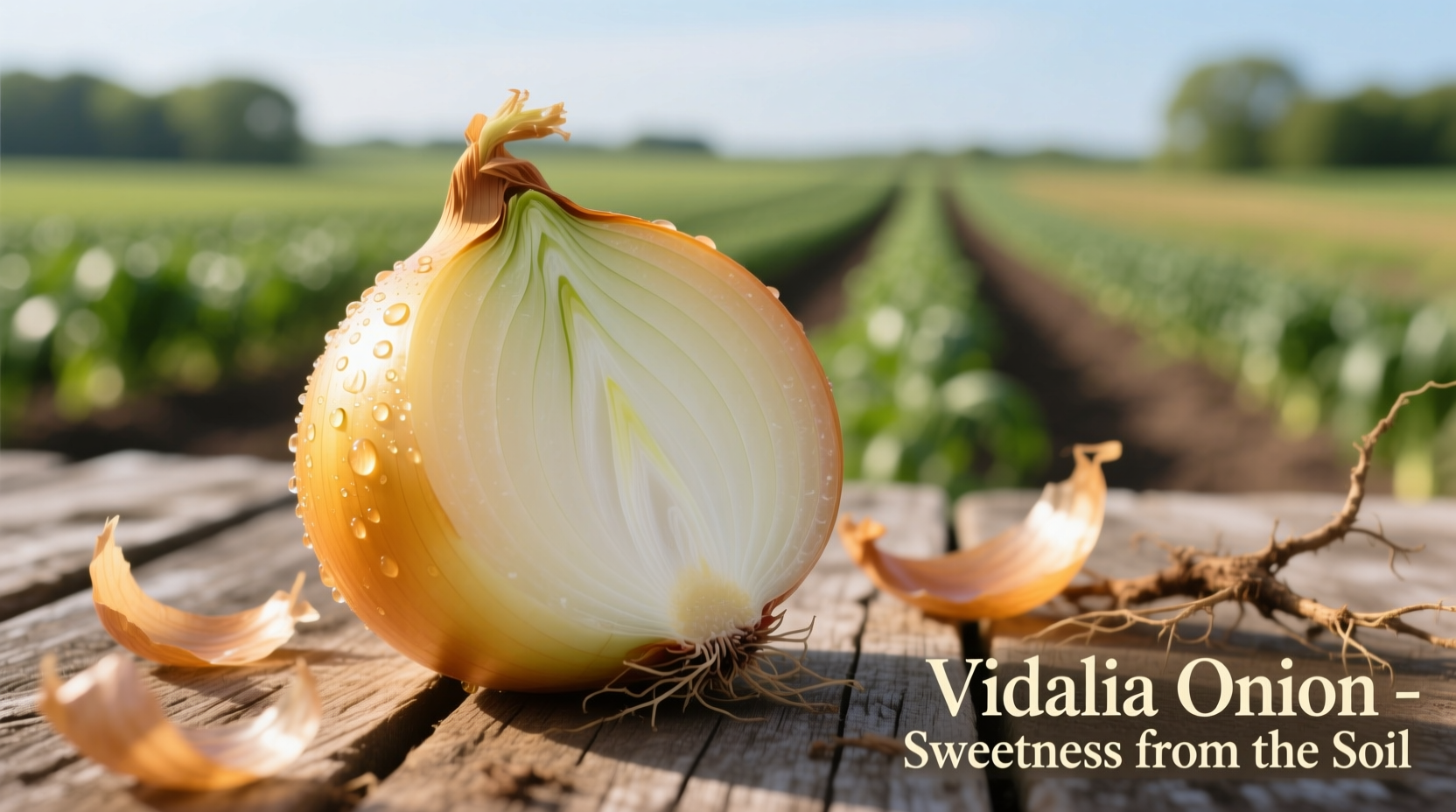If you've ever wondered why Vidalia onions taste remarkably sweeter than regular onions or why they're only available seasonally, you're not alone. This guide delivers precise information about what makes Vidalia onions special, where they come from, how to identify authentic ones, and why chefs prize them for specific culinary applications. You'll discover the exact growing region that creates their signature mildness, learn how to spot genuine Vidalias versus imposters, and understand their seasonal availability patterns.
The Definitive Vidalia Onion Explanation
When someone asks what is a Vidalia onion, they're typically seeking more than just a basic definition. They want to understand why these onions command premium prices, why they're only available certain times of year, and whether they're truly different from other sweet onions. The answer lies in a unique combination of geography, agriculture, and legal protection.
Vidalia onions aren't just a variety—they're a legally protected agricultural product grown only in a specific 20-county region of southeastern Georgia. The Vidalia name is trademarked and regulated under both state and federal law, making it one of America's most distinctive regional food products. What sets them apart is their remarkably low pyruvate content (typically below 5.0 milligrams), which creates their signature sweetness and mild flavor profile.
| Characteristic | Vidalia Onion | Regular Yellow Onion | Other Sweet Onions |
|---|---|---|---|
| Pyruvate Level | <5.0 mg | 8-12 mg | 5-7 mg |
| Growing Region | 20 Georgia counties | Worldwide | Specific regional areas |
| Seasonality | April-September | Year-round | Varies by region |
| Legal Protection | Federally trademarked | None | Limited regional protection |
Why Geography Creates Exceptional Sweetness
The distinctive mildness of Vidalia onions stems directly from the unique soil composition in their designated growing region. The low-sulfur, sandy loam soil of southeastern Georgia—particularly in Toombs County where the town of Vidalia sits—prevents the development of the sulfur compounds that create the sharp, pungent flavor in regular onions. This geological advantage produces onions with naturally lower levels of pyruvic acid, the compound measured to determine onion pungency.
According to the University of Georgia College of Agricultural and Environmental Sciences, the specific combination of soil pH (between 6.0-6.5), low sulfur content, and the region's climate creates ideal conditions for sweet onion development. Research from UGA's agricultural extension confirms that attempts to grow Vidalia onions outside this designated region consistently produce more pungent bulbs due to different soil chemistry.
Vidalia Onion Timeline: From Local Crop to Protected Product
The story of Vidalia onions spans nearly a century, evolving from a local crop to a federally protected agricultural product:
- 1930s: Farmers in Toombs County, Georgia begin experimenting with growing sweet onions
- 1940s: Mose Coleman starts selling the uniquely mild onions at his roadside stand in Vidalia
- 1986: Georgia state legislature passes the Vidalia Onion Act, creating the Vidalia Onion Committee
- 1989: Federal marketing order establishes the official 13-county growing region
- 2011: Growing region expands to 20 counties after USDA review
- Present: Vidalia onions generate over $150 million annually for Georgia's economy
How to Identify Authentic Vidalia Onions
With counterfeit Vidalias appearing in markets, knowing how to verify authenticity matters. Genuine Vidalia onions must display:
- The official Vidalia onion logo on packaging
- A USDA grade shield indicating they meet quality standards
- Harvest date between April and September (their natural growing season)
- Origin labeling showing one of the 20 authorized Georgia counties
The Vidalia Onion Committee maintains strict quality control, with each shipment tested for pyruvate levels. Any onion exceeding 5.0 milligrams of pyruvate cannot legally be sold as a Vidalia. This scientific standard ensures consumers receive the genuinely mild product they expect.

Culinary Applications and Substitutions
Chefs value Vidalia onions for applications where raw onion flavor would normally overpower a dish. Their low pungency makes them ideal for:
- Raw applications like salads, salsas, and sandwiches
- Caramelizing (they develop complex sweetness faster than regular onions)
- Pickling (retains texture better than other varieties)
- Grilling (holds shape while developing rich flavor)
When authentic Vidalias aren't available, suitable substitutes include:
- Walla Walla sweet onions (Washington state)
- Walla Walla sweet onions (Washington state)
- Granex hybrids (like Maui or Texas Sweet)
- Imperial sweet onions (California)
Remember that true Vidalias have a distinctive flat shape compared to the more rounded profile of regular yellow onions—a visual clue when selecting them at market.
Seasonality and Storage Guidelines
Vidalia onions follow a strict seasonal availability due to their specific growing requirements:
- Harvest period: Late April through early September
- Peak availability: May through July
- Storage life: 2-3 weeks at room temperature, up to 2 months refrigerated
Unlike storage onions, Vidalias have thin skins and high water content, making them more perishable. For best results, store them in a cool, dark place with good air circulation. Never store Vidalias in plastic bags—they need to breathe to prevent premature spoilage.
Frequently Asked Questions
Why are Vidalia onions only grown in Georgia?
Vidalia onions can only be legally grown in a specific 20-county region of southeastern Georgia because the unique low-sulfur soil composition creates their signature sweetness. Federal and state laws protect the Vidalia name, requiring both the specific growing region and pyruvate levels below 5.0 milligrams to qualify as authentic.
How do I know if I'm buying a real Vidalia onion?
Authentic Vidalia onions will display the official Vidalia logo, show a harvest date between April and September, and indicate one of the 20 authorized Georgia counties on the packaging. The Vidalia Onion Committee tests each shipment for pyruvate levels, and any onion exceeding 5.0 milligrams cannot be sold as a Vidalia.
What makes Vidalia onions sweeter than other onions?
Vidalia onions have naturally low levels of pyruvic acid (below 5.0 milligrams) due to the low-sulfur soil in their designated growing region. This chemical compound determines onion pungency—lower levels create the distinctive sweetness and mild flavor that characterize Vidalias. Regular yellow onions typically measure 8-12 milligrams of pyruvate.
Can I substitute Vidalia onions in recipes?
Yes, when Vidalias aren't in season (April-September), suitable substitutes include Walla Walla sweet onions from Washington, Maui onions from Hawaii, or other Granex hybrids. For raw applications, these alternatives provide similar mildness. For cooked dishes, you may need to adjust cooking times as substitutes can vary in water content and sugar levels.
How should I store Vidalia onions to maximize freshness?
Store Vidalia onions in a cool, dark place with good air circulation—never in plastic bags. They'll last 2-3 weeks at room temperature or up to 2 months if refrigerated in a mesh bag. Unlike storage onions, Vidalias have thin skins and high water content, making them more perishable. Avoid storing them near potatoes, which release moisture that accelerates spoilage.











 浙公网安备
33010002000092号
浙公网安备
33010002000092号 浙B2-20120091-4
浙B2-20120091-4